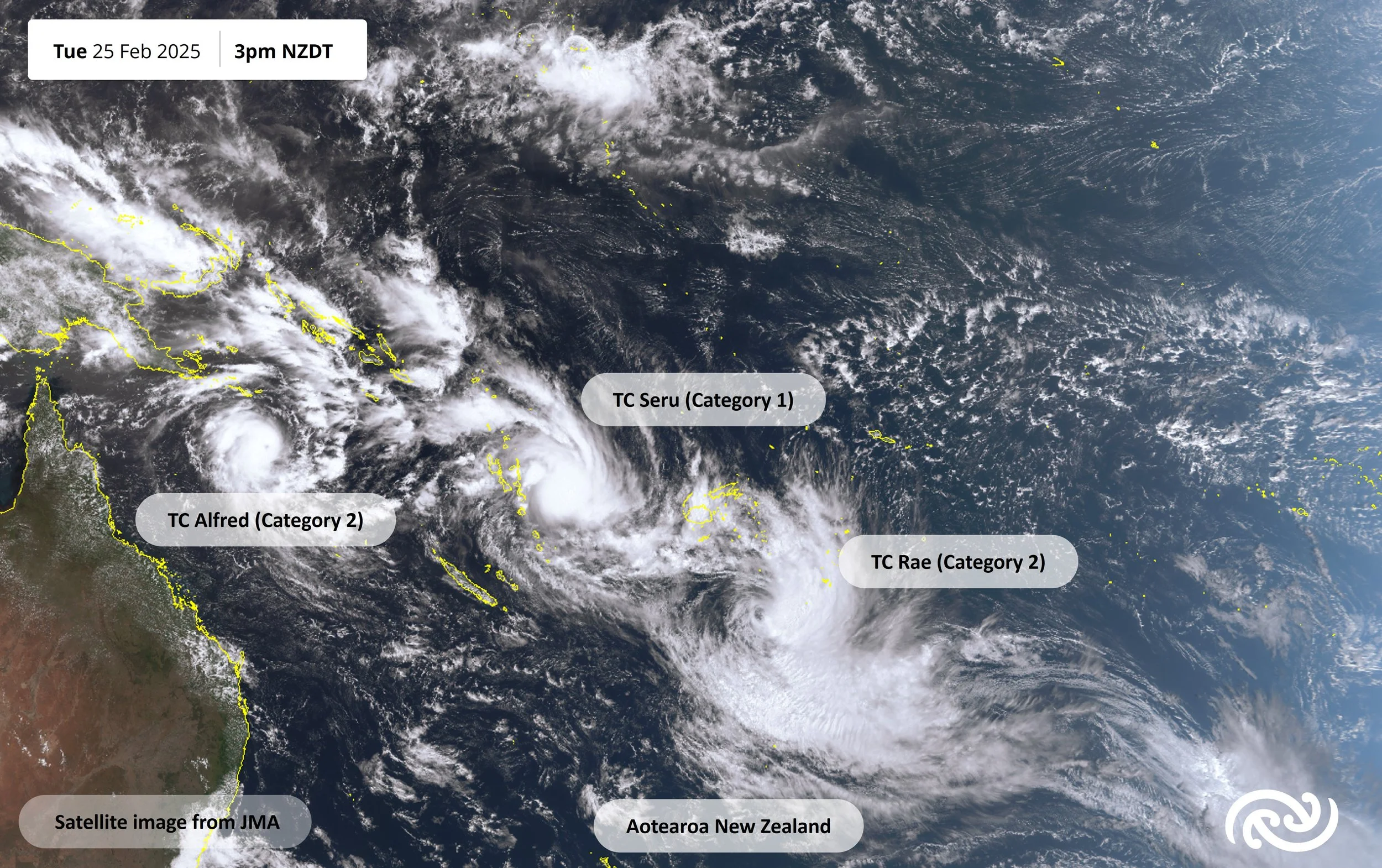What’s in a name?
What do Irene, Rae, Tam, and Osai all have in common?
They’re all names of past South Pacific tropical cyclones. But who decides on these names? And why name them at all?
Annotated true colour satellite image from 25 February 2025 showing three tropical cyclones at once: Tropical Cyclone Alfred named by Australia’s Bureau of Meteorology, and Tropical Cyclone Seru and Tropical Cyclone Rae both named by Fiji Meteorological Service (Satellite image courtesy of the Japanese Meteorological Agency, 2025)
Giving a tropical cyclone a name helps meteorologists track it as it moves across large stretches of ocean. These systems can affect many countries, so it’s important that every country’s weather agency knows they’re talking about the same storm.
A name also makes it much easier to communicate the risks to the public and to people who rely on forecasts, such as pilots and sailors. When there’s more than one cyclone at the same time, clear names make things easier and prevents confusion.
In the past, cyclones (and their northern cousins, hurricanes in the north Atlantic and typhoons in the North Pacific) were named in all sorts of ways, for example after the saint’s day they arrived, their location and date, or even political figures. These days, things are much simpler. If you’re out at sea, it’s far easier to hear “Tropical Cyclone Hale” than “Tropical Cyclone 17.5S 160.5E”!
Today, names are agreed in advance by the world’s tropical cyclone centres. Each centre monitors a specific region and works through a list of names in alphabetical order, first an A-name, then B, then C, and so on.
For example, the Fiji Meteorological Service is responsible for naming tropical cyclones in our part of the Pacific. If the most recent one was Tam, the next will start with the letter U.
Once a list is used up, it starts again, except when a storm has been especially destructive or deadly. In those cases, its name is retired out of respect, and a new name is chosen to replace it.
If a tropical cyclone moves from one tropical cyclone centre’s area to another (for example, from Fiji to New Zealand), it keeps its name. Because tropical cyclones that affect New Zealand tend to develop in warmer waters farther north and move into our area of responsibility, it is rare (but not impossible) that New Zealand would get to name a topical cyclone. The last one named by New Zealand was Tropical Cyclone Eva in 2016.

